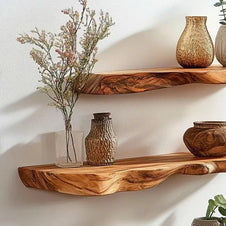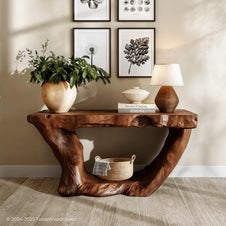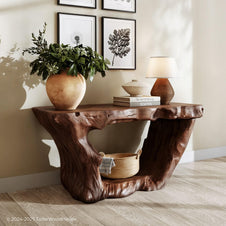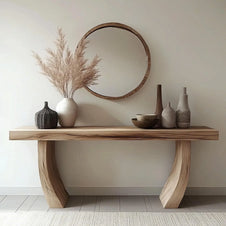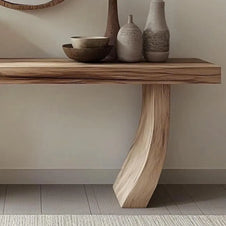Are you tired of bulky, traditional nightstands that swallow up floor space and make your bedroom feel cramped? Is your dream a calm, airy space with clean lines and a sense of order? A floating nightstands diy project might be the perfect solution you've been searching for. It is a fantastic way to not only save space but also to inject your own unique style into your bedroom. This guide will provide design inspiration and practical advice to help you plan and execute a floating nightstands diy project that is a true reflection of your personality and a beautiful addition to your home.
Popular Floating Nightstand Designs
Before you start building, it's a great idea to think about the style you want to achieve. A floating nightstands diy project is a blank canvas, and you have the freedom to customize every detail.
The Modern Minimalist
This is the most common and classic style for a floating nightstands diy. The design is a simple, rectangular box with clean lines and a smooth, uniform finish. To achieve this look, you can use plywood with a high-quality, painted finish in a neutral color like white or gray. The result is a nightstand that blends seamlessly into the wall, offering a clean, unobtrusive look. This floating nightstands diy project is all about function over flash.

If you're looking for a floating bedside table that fits the modern minimalist style, this one is a perfect match.
The Rustic Farmhouse
For a warmer, cozier vibe, a floating nightstands diy project can lean into rustic design. This style often uses reclaimed wood or wood with a noticeable grain, like pine or oak. You can apply a dark stain to bring out the wood’s natural beauty and imperfections, giving the piece a vintage or worn-in feel. This type of floating nightstands works especially well in bedrooms that feature natural textures and a comfortable, homey atmosphere.
For example, this rustic floating nightstand is the perfect way to add a grounded, natural touch that makes a space feel more comfortable.
The Industrial Style
If you're looking for a bolder statement, you can incorporate industrial elements into your floating nightstands diy project. Consider using a darker wood and finishing it with a clear coat to maintain a natural look. Instead of a hidden French cleat mount, you could use exposed black metal brackets to secure the nightstand to the wall. This hardware becomes a part of the design, giving your floating nightstands an edgy, urban feel.

Consider this floating nightstand, made from rich, dark wood, to create a stunning contrast that anchors your bedroom's design.
Your creativity is the most important tool in this floating nightstands diy project. Whether you're drawn to sleek modernity, warm rustic charm, or an edgy industrial feel, you have the power to create a nightstand that truly reflects your unique style. For more ideas for floating nightstands diy project, you should refer to Pinterest.
Planning Your Floating Nightstands DIY Project
With a design in mind, it’s time to start planning. This part of the floating nightstands diy process is essential for ensuring your project is a success.
Measuring for Your Space
A key benefit of a floating nightstands diy is being able to create a piece that perfectly fits your space. To get the ideal dimensions, measure the width of the space you have available next to your bed. You should also consider the height of your mattress, as your nightstand’s surface should be roughly level with it for easy access. Finally, determine the depth you need - just enough for a lamp and a few essentials without getting in the way. Proper measurements are the foundation of any floating nightstands diy.
Choosing the Right Wood
The wood you choose will impact both the cost and the final look of your floating nightstands diy.
-
Plywood: This is an excellent choice for a budget-friendly and durable build. It’s stable and easy to work with, especially if you plan to paint your floating nightstand.
-
Pine: This is another great option for a floating nightstand that you want to stain. Pine is affordable and easy to find, and its grain takes stains well.
-
Hardwoods: For a more luxurious and high-end floating nightstands, consider a hardwood like oak or walnut. These woods are more expensive but offer a beautiful natural grain and are incredibly durable.
Selecting Your Mounting Method
The mounting method is the secret behind the "floating" effect. The style you choose can also impact the overall design of your floating nightstand. A very popular and secure option is a French cleat. This system is made of two angled pieces of wood. One piece is securely mounted to the wall, and the other is attached to the back of the nightstand. When you place the nightstand on the wall, the two pieces lock together, creating an incredibly strong and hidden mount for your floating nightstand.
Preparing Tools
Having the right tools ready to go will make your floating nightstands diy project much more enjoyable.
The key to a successful floating nightstands diy project is found in the planning. By carefully measuring, choosing the right wood, and selecting a mounting method, you'll set your floating nightstands diy project up for a professional and long-lasting result.

When you plan right, you can create a beautiful piece that looks just like this one.
Step-by-Step of Building Floating Nightstand
This is where your vision for a floating nightstands diy comes to life. We'll walk through the process of building a box-style nightstand with a drawer.
Step 1: Planning
Careful planning is the key to a successful project. Begin by sketching your design and determining all your measurements, ensuring you include space for drawer slides, a French cleat, and any wires or outlets.
Step 2: Making Cuts
Following your cut list, use a miter saw or a circular saw with a guide to cut the wood pieces for your nightstand's box. To ensure a smooth glue-up, check your angles with an angle finder or speed square - the closer to 45 degrees, the better.
Step 3: Assembling the Outer Box
Begin by applying wood glue to your pieces. Use corner clamps to secure the boards, ensuring the corners stay perfectly square while the glue dries overnight. For extra strength, you can reinforce the miter joints with brad nails or corner brackets. Once everything is secure, use wood filler to fill any gaps and nail holes, preparing the piece for finishing.
Step 4: Building Drawer
Build a separate, smaller box for the drawer using the same method as the box frame. The key here is to measure very precisely to ensure the drawer box fits perfectly inside the nightstand frame, allowing for the drawer slides.
Step 5: Installing Drawer Slides
Begin the installation process by separating the two parts of the drawer slide. With one piece in hand, carefully attach it to the inside of the nightstand box, double-checking with a ruler to ensure it's perfectly straight and level. Next, attach the other half of the slide to the drawer box itself. Once both pieces are installed, gently slide the drawer into the main box to confirm it glides smoothly.
Step 6: Attaching the Drawer Face
To attach the drawer face, first carefully align the face over the drawer box, ensuring the gap around the edges is even. Hold it in place with painter's tape or clamps. Finally, from the inside of the drawer, drive screws through the box to secure the face. The result is a beautiful, seamless finish for your project.
Step 7: Sanding and Finishing
A great finish can make your simple floating nightstand look expensive and professional. Begin by using wood filler to hide all screw holes, then sand the entire piece from medium to fine grit for a smooth surface. Next, apply your chosen stain or paint, making sure to use a primer if you're painting. To ensure your hard work lasts for years, always finish with a protective topcoat.
Step 8: Mounting the Nightstand
The final step of your floating nightstands diy project is a simple installation. Begin by locating and marking your wall studs. Next, use a level to draw a straight line and screw the wall-side of the French cleat into the studs. After you've attached the other half of the cleat to the back of the nightstand, simply lift and slide your piece onto the wall cleat to lock it into place.
Follow these steps, and you’ll have successfully completed your floating nightstands diy project.
Final Thought
A floating nightstands diy project is a wonderful way to add a custom, high-end touch to your home. It’s an opportunity to learn valuable woodworking skills, save money, and create a piece of furniture that is both beautiful and perfectly suited to your needs. The process is a rewarding journey, and the final product is a testament to your hard work and creativity. So, take a step back and admire your new floating nightstands diy project - it’s a perfect addition to a modern, stylish, and personal space.


